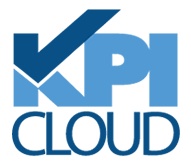by Myles Gilsenan
 Financial managers in all industries need to be aware of the health of their organization as well as the health of the processes that enable sound financial management. In this article, I will outline some basic metrics that can be used to identify and evaluate the health and efficiency of the accounting and finance function as well as the financial health of the organization.
Financial managers in all industries need to be aware of the health of their organization as well as the health of the processes that enable sound financial management. In this article, I will outline some basic metrics that can be used to identify and evaluate the health and efficiency of the accounting and finance function as well as the financial health of the organization.
While it is true that specific metrics can vary across industries, in this article we will address metrics and concepts that can be applied across most industries.
The metrics to be discussed will be broken up into the following categories:
- Accounting and Reporting Process
- General Financial Health
- Accounts Payable and Accounts Receivable
- Inventory and Fixed Assets
- Profitability and Yield
Accounting and Reporting Process
It goes without saying that the most important ‘metric’ in financial management is accuracy. If the accounting and reporting processes of the organization are not controlled and efficient than accuracy can suffer.
Below are the key metrics for accounting and reporting processes:
- # of days to close the books
- # of manual journal entries during the period
- # and size of adjustments and reclassification entries during the close
- Size of unreconciled amounts between the General Ledger (GL) and the sub ledgers
- Size of unreconciled balances between intercompany counterparties
General Financial Health:
Regardless of industry there are certain principles of sound financial management that should be followed. The metrics below are some of the core metrics that can be used to measure financial health:
Debt to Equity Ratio = Total Liabilities / Shareholder’s Equity
The debt-to-equity ratio is a measure of the relationship between the capital contributed by creditors (liabilities) and the capital contributed by shareholders (shareholder’s equity). While there is no single answer for what is a good debt to equity ratio, what can be said is that a ratio too high could indicate excessive risk and a ratio too low could indicate excessive caution.
Current Ratio = Current Assets / Current Liabilities
This ratio identifies the relationship of current assets vs current liabilities. It is a popular ratio for testing the liquidity position of an organization. In general, the higher the ratio the better – meaning the organization is more likely to be able to pay its short term obligations.
Accounts Payable and Accounts Receivable:
For an organization to continue to be an ongoing concern it must have strong processes to pay its suppliers and to bill and collect cash from its customers. The metrics below can be used to identify and evaluate how efficiently a company is paying it suppliers and billing and collecting from customers.
Accounts Payable Turnover = Total Supplier Purchases / Average Accounts Payable
This is a short-term liquidity measure that shows how many times per period a company pays off its average accounts payable amount. If the ratio is falling then the company is taking longer to pay off its suppliers. Benchmarking can be used to compare this ratio to other companies in the same industries.
Days Payable Outstanding = Accounts Payable / (Cost of Sales / 360
This metric calculates the ratio of the accounts payable amount to the average daily cost of sales. If this number is increasing it means the company is taking longer to pay its suppliers. If this number is decreasing it means the company is paying its suppliers more quickly.
% Accounts Payable Overdue = Accounts Payable Overdue / Total Accounts Payable
If the % of AP Overdue is rising or is too high that could indicate that the company is in a cash crunch and is having trouble paying its suppliers.
Avg Supplier Payment Days = 365 / Accounts Payable Turnover
This metric displays the average number of days to pay suppliers. As with the other AP metrics, if this starts to increase too much it can be an indication of a worsening financial condition.
Accounts Receivable Turnover = Net Credit Sales / Average Accounts Receivable
This ratio measures a business’ ability to efficiently collect from customers. A higher ratio is better as that means the company is collecting from its customers and therefore has cash available to pay suppliers and expand operations.
Days Sales Outstanding = Accounts Receivable / Net Credit Sales x 365
Like the AR turnover ratio, this metric measures how well a company is collecting its receivables from customers. A lower ratio is better.
Best Possible Days Sales Outstanding = Current Accounts Receivable / Net Credit Sales x 365
This metric is the same as DSO except that it uses ‘current’ accounts receivable. This figure expresses the best possible level of receivables collection.
% AR Overdue = Accounts Receivable Overdue / Total Accounts Receivable
This metric indicates what % of total accounts receivable is overdue. The higher the percentage the slower customers are paying.
Inventory and Fixed Assets
Inventory and fixed assets can both represent significant investments for organizations. Effectively managing these assets is critical to the health of an organization.
Total Asset Turnover = Sales / Total Assets
This metric displays the amount of sales generated per dollar of assets. It indicates how well a company is deploying its assets.
Fixed Asset Turnover = Sales / Net Property, Plant and Equipment
Indicates how efficiently and effectively a company is leveraging its investment in fixed assets (PPE). This is often used in the manufacturing industries where investment in property, plant and equipment can be very high.
Inventory Turnover = Cost of Goods Sold / Average Inventory
Inventory turnover is a way of measuring how many times a business sells its stock of inventory in a given time period.
Profitability and Yield
Although it is important for a company to have a solid financial position to attract customers, investors and additional capital, it is equally or more important to understand profitability (as most owners and investors want a return on their investment).
Gross Profit Margin = Revenue - Cost of Goods Sold / Revenue
This metric displays the profit margin before consideration of operating expenses (like salaries, rent, utilities) and before interest and taxes. It is therefore important for a company to have a healthy gross profit margin in order to be able to cover other expenses.
Net Profit Margin = Total Revenue - Total Expenses / Total Revenue
This metric takes into account all of the expenses of the organization and therefore measures how much revenue makes it all the way to the bottom line.
Earnings Before Interest, Taxes, Depreciation and Amortization (EBITDA) = Revenue – Expenses (excluding interest, taxes, depreciation and amortization)
EBITDA is essentially net income with interest, taxes, depreciation, and amortization added back to it. Since EBITDA includes operating expenses it can provide a good measure of a company’s core operating profitability.
Return on Equity = Net Income / Shareholder’s Equity
This metric displays the amount of net income returned as a percentage of shareholder’s equity. It indicates how much profit is being delivered in return for the capital invested.
There are, of course, other metrics – some of which are very unique to specific industries. It was not the intention of this article to provide an exhaustive list. But these are some of the basic metrics that can be used to assess the financial health of an organization.
 |
Myles Gilsenan is a Practice Director at KPI Partners. He is a business intelligence professional highly skilled at managing large-scale global information technology programs. Find out more about Myles on our leadership page or check out Myles' blog at KPIPartners.com. |




